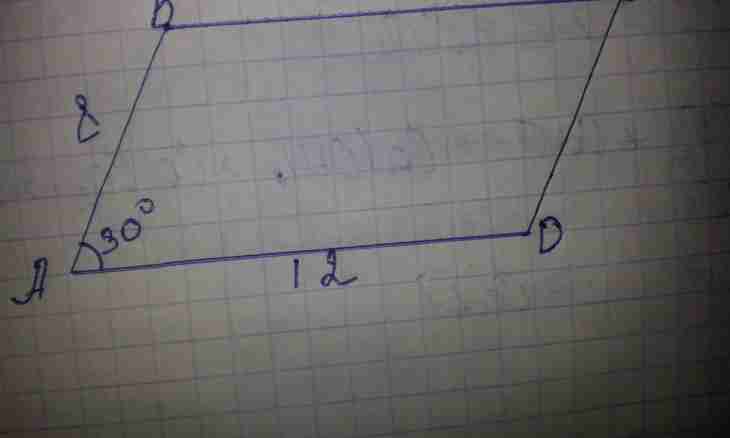The parallelogram is the flat geometrical figure formed by crossing of two couples of straight lines parallel among themselves. All properties of this quadrangle are caused by this its distinctive property - parallelism of the opposite sides. From it paired equality of lengths of the parties and similarity of opposite corners follow, in particular. These properties considerably simplify calculation of sizes of corners in figure tops.
Instruction
1. If it is required to calculate size sharp (α) a corner in a parallelogram, size at least of one of corners (β) which is known, then recognize that the sum of all four corners is obliged to be equal 360 °. As one of the main properties of this figure consists in similarity of opposite tops, for calculation of sizes of corners in couple of unknown parties halve the difference between 360 ° and the doubled size of the known corner: α= (360 °-2*β)/2.
2. If it is necessary to determine the size of an acute angle (α) in a parallelogram in which lengths of the adjacent parties (And yes C) and smaller of diagonals (d) are known, consider the triangle formed by these three pieces. The cosine of a corner necessary to you will be equal to a ratio between the sum of the squared lengths of the parties from which the squared diagonal length is subtracted, and the doubled work of the same two parties - it follows from the theorem of cosines. Trigonometrical function which on value of a cosine of the angle restores its size in degrees is called an arccosine. Also apply it to the ratio received by means of the theorem of cosines: α=arccos ((And² + In²-d²) / (2*A*B)).
3. If, as well as in the previous option, lengths of the adjacent parties are known (And yes C), and instead of short diagonal the size long is given (D), the algorithm will a little become complicated. Opposite to long diagonal the obtuse angle of a parallelogram lies therefore at first calculate its size on a formula from the previous step, and then apply a formula from the first step. In a general view the formula can be written down so: α= (360 ° - 2*arccos ((And² + In²-D²) / (2*A*B)))/2.
4. If except lengths of the adjacent parties of a parallelogram (And yes C) its area (S) is known, it is enough for calculation of size of an acute angle (α). Calculate a sine of this corner from a ratio between the area and the work of lengths of the parties, and then apply to result function an arcsine - it works similar to an arccosine: α=arcsin (S / (A*V)).

